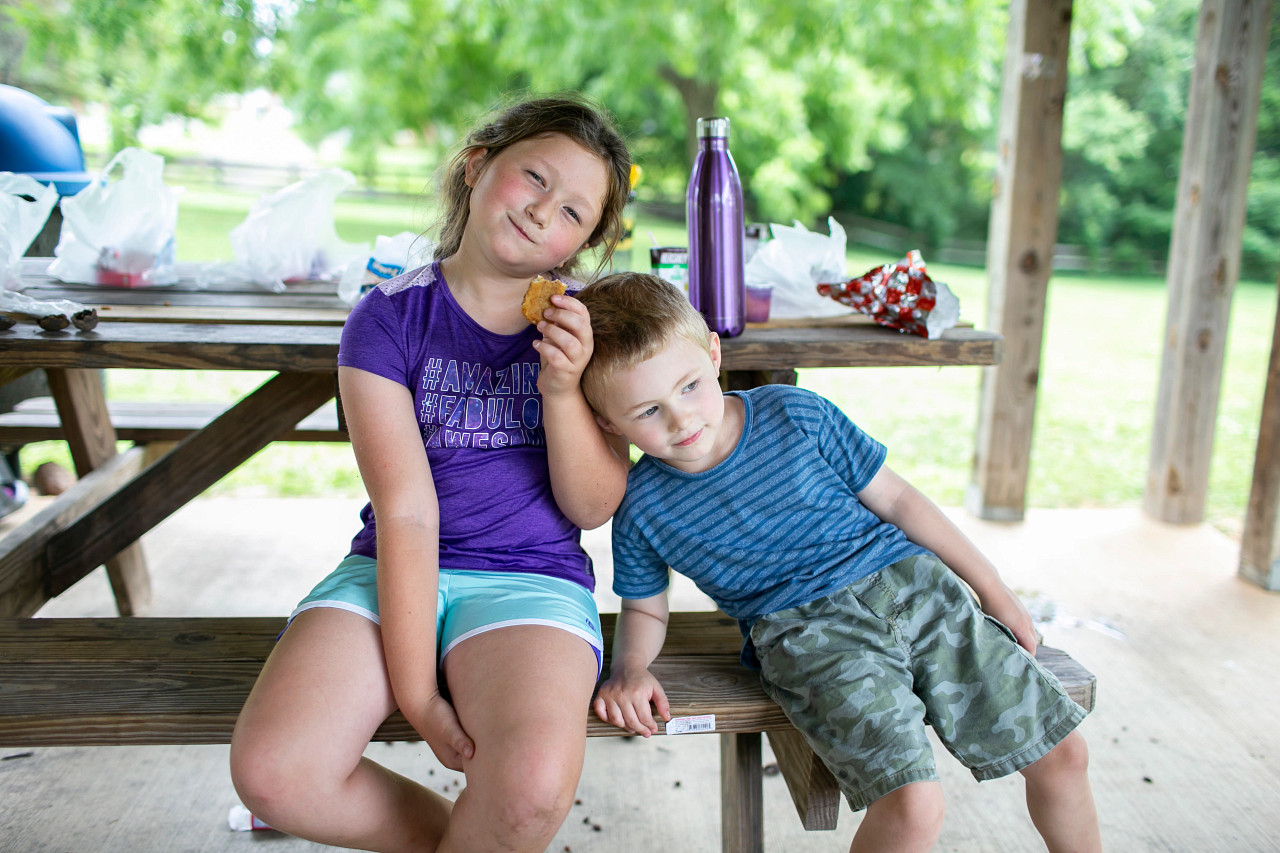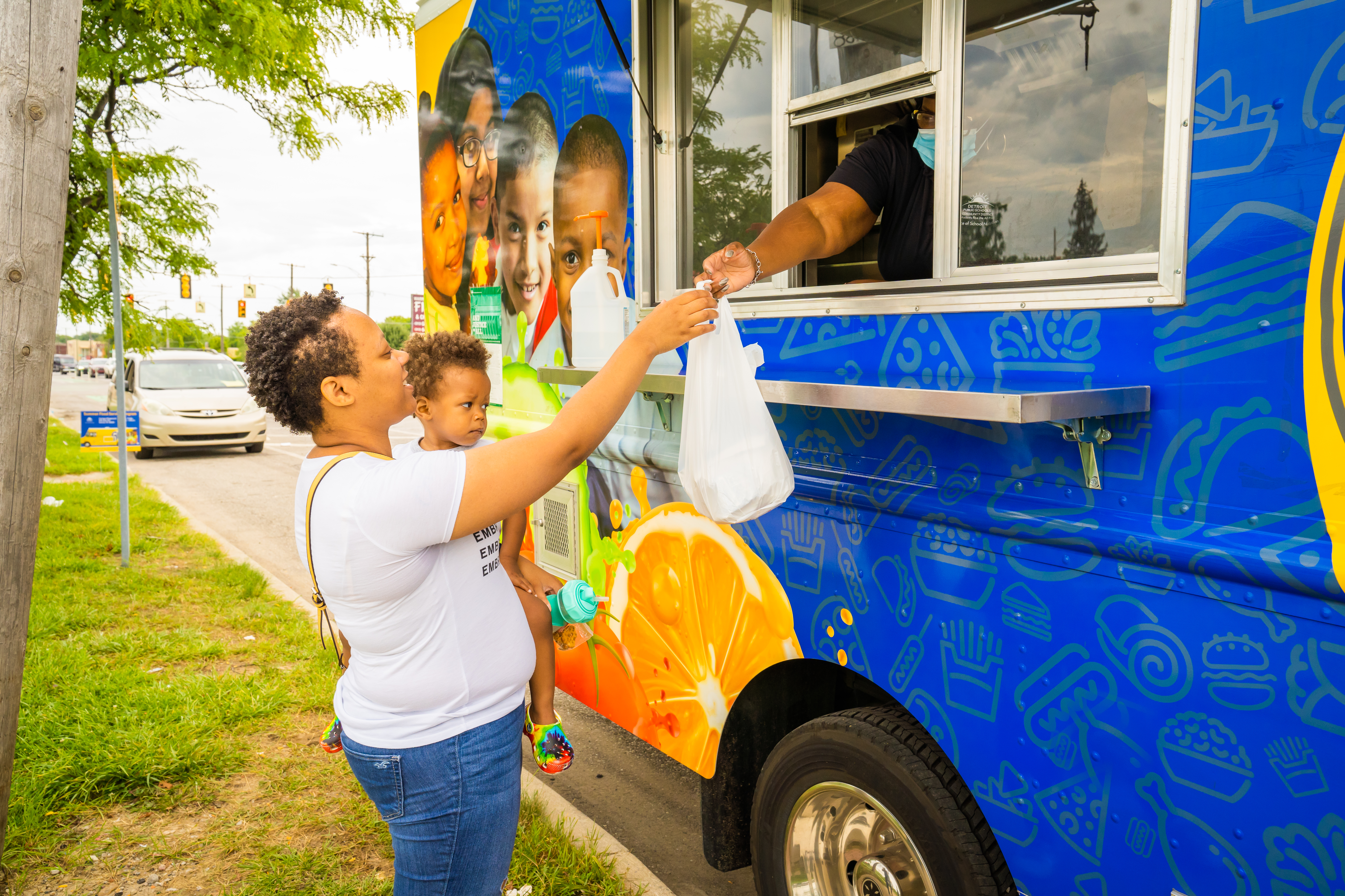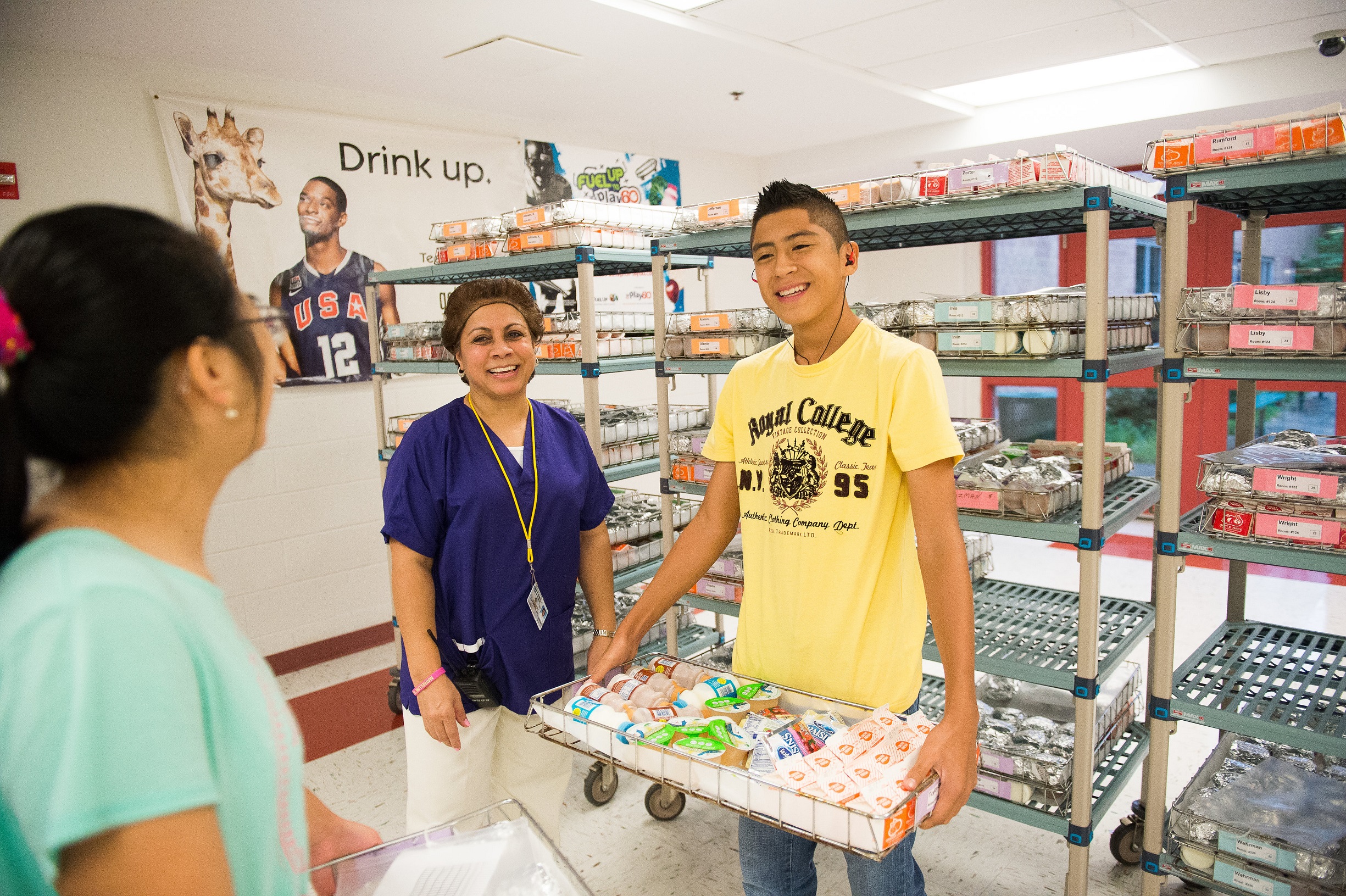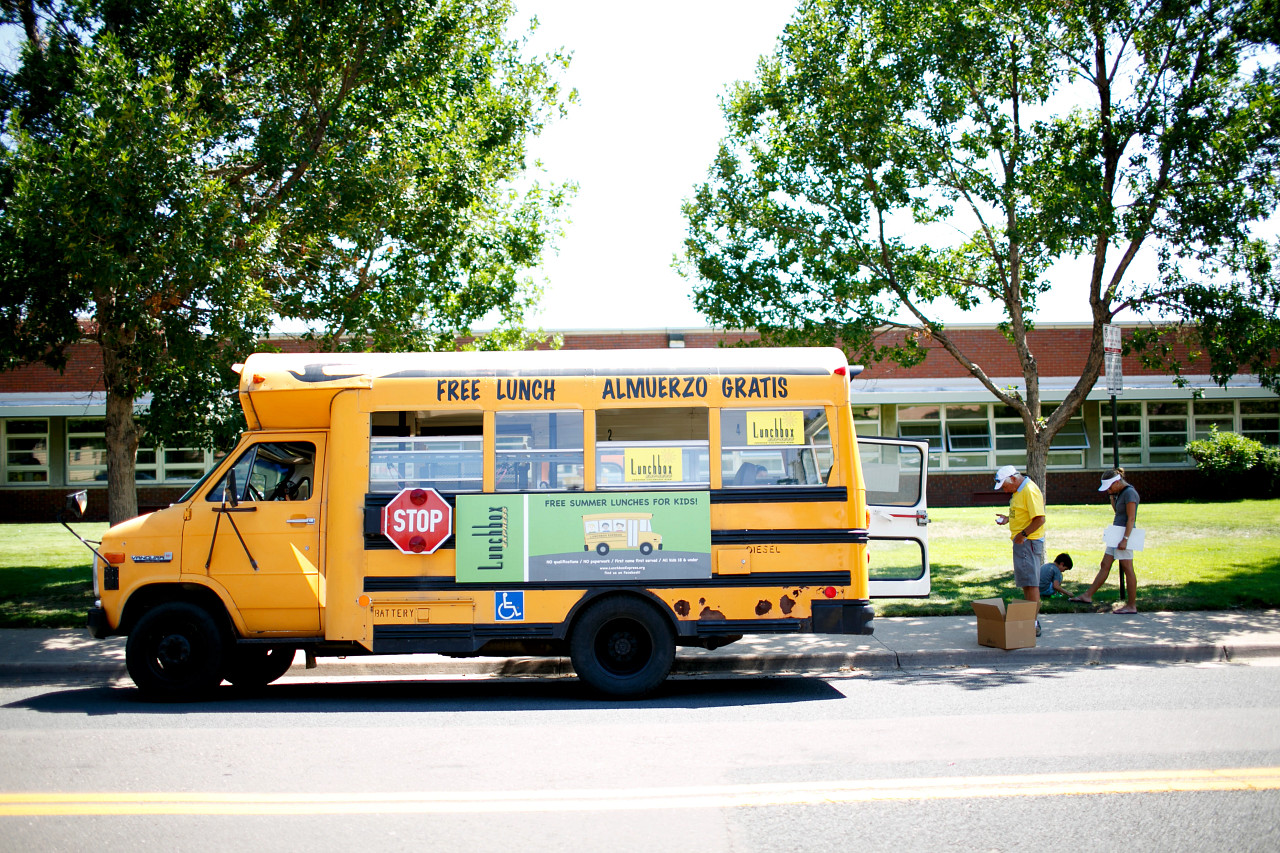Rural Communities
Discover research, strategies and lessons learned rooted in the experience of rural people and places.
An urgent truth exists in America: children living in rural communities face a particular vulnerability to food insecurity and hunger. Rural child hunger is deeply intertwined with other social determinants, including financial insecurity, racial inequity and inadequate healthcare and transportation infrastructure. However, just as the challenges facing rural communities are interconnected, so are the solutions.
Broadly, food insecurity affects 1 in 8 children in the United States. However, food security is slightly higher in rural areas than in urban areas: 16 percent in rural areas versus 13% in urban areas in 2017. Rural communities are more likely to experience persistent poverty and have also been slower to recover from the Great Recession.

Food Insecurity in Rural Communities
Share Our Strength and Feeding America partnered with a team of researchers from six universities, led by North Carolina State University, on an in-depth qualitative study to explore what makes it easier or harder for families in rural areas to provide food for their kids. The study is the first to provide an in-depth exploration of the experiences of food insecurity in six rural counties across the United States. This qualitative study involved more than 150 interviews with families in six states. The Rural Food Insecurity Qualitative Research Brief has more information on the study design and findings.
Share Our Strength and Feeding America also published a joint report that broadly examines the overlooked crisis of children living with the threat of hunger in rural America. The Child Hunger in Rural America report includes statistics on poverty gleaned from secondary sources, highlights from our qualitative research focused on interviews with rural families, and learnings from the 2019 Rural Child Hunger Summit.

Non-Congregate & "Grab & Go" Meal Service Models
Breakfast After the Bell
Rural students often travel long distances to reach their school and don’t have access to breakfast before the school day begins. Breakfast in the classroom allows students to have breakfast together regardless of when they arrive at school.
Second Chance Breakfast
Older rural students, especially in agrarian communities, may start the school day late for a variety of reasons including working with a family business, farm, or other school or family responsibilities. Second Chance Breakfast allows these students to access breakfast later in the school day.

School Meals Resources
Mobile meals
Mobile Meals: are one solution to reaching kids who are missing out on meals during the summertime when school is out of session. Using the “mobile meals” model, sponsors use vehicles to transport and serve meals directly at apartment complexes, parks, and other locations where children spend their summer days. Mobile programs provide a hyper-local food delivery model that may be particularly useful in rural or suburban communities where distance and a lack of public transportation options are major barriers to access. As part of No Kid Hungry’s Mobile Meals Toolkit, we’ve documented three unique mobile meals models that were thoughtfully designed to meet the needs of children and families. Each one highlights a different rural community and will give you new ideas and help you to think strategically about designing a successful mobile meals program.
- Mobile Meals Toolkit: Meal Service Logistics & Best Practices
- Mobile Meals Toolkit: Partnerships and Site Selection
- Mobile Meals: Planning & Delivery Checklist
Homes as meal sites
For families to access summer meal sites, it is important that their transportation needs be front of mind. Prairie Family Center, a nonprofit in a small town in Colorado, had to get creative to increase the accessibility of their sites. Knowing that many families could not make the trip to and from town to their one summer meal site located at a school, they turned to the community itself, asking residents to open up their homes and yards as summer meal sites. While it seemed like the approach might work, placing summer meal sites in homes and yards was a radical shift from serving meals in the school cafeteria.

Out of School Time Meal Resources
School Gardens & Farm to School
School gardens and farm to school programming can improve students healthy eating habits and provide fresh local produce for school meal programs. The USDA offers farm to school grants regularly to encourage the use of gardens on school sites to establish healthy eating habits; as educational tools in the classroom; and to promote community inclusion.
Learn more about USDA's Farm to School Programming.
Local Foods
Rural schools and community providers utilize their agrarian geographies to bring local fruits, vegetables, and even meats and eggs to their meal programs. This close connection to their local farmers and ranchers has created a system that can overcome common supply chain disruptions, invest in their local economy, and create engaging educational opportunities. Rural communities create these local school food systems by partnering with local and regional businesses, buying directly from farmers, and combining meals with agricultural education.
School Food Pantries
School pantries are another resource beyond school meals to support students and families who are experiencing food insecurity. School food pantries are helpful in combination with federal nutrition programs like school meals, SNAP and WIC for ensuring students and their families have consistent access to food. There are a number of considerations that need to be made regarding launching and maintaining a pantry, with decisions centered around best serving those in need. Our Promising Practices for Starting & Maintaining a School Food Pantry resource highlights promising practices in creating and maintaining a school food pantry for students and families experiencing food insecurity. The resources details types of school pantry setups and food distribution methods; includes a checklist for starting a food pantry; spotlights from the field; and more.
Porch Visits pairs meal delivery with home visits to holistically meet families’ needs. Pilot partners in VA, WA, and CO forged innovative partnerships with community organizations to provide families with food and meals; wi-fi installation; assistance with enrollment in programs like Medicaid, WIC, and SNAP; tutoring for kids; and more. A trusted community member visited families every week, alleviating feelings of isolation and overwhelm that have been particularly difficult during Covid-19.
Innovation: Schools, nonprofits, community-based organizations, and others are constantly coming up with new ideas to reach more kids with healthy food and improve their programs. Read about the innovative work meal providers across the country are doing and be inspired to implement your own program innovations.
Meal service programs supporting rural communities must be creative about program promotion as they often cover large geographic areas with limited transportation and a lack of broadband infrastructure. These rural programs utilize multiple promotion strategies to be sure every community member is aware of meal service dates and times. The specific combination of promotion strategies implemented will depend on your community's preferred forms of communication.
Direct Outreach with Families Calls and Text Messages
In many rural communities, phone service will cover most if not all of a community, while broadband internet access will not. In this case, text messages or phone calls about meal service will be more accessible for many community members than an organization's website or social media. Many phone plans also have unlimited talk and text but limited data. Therefore, messaging should have limited use of links to websites and include all meal site information in the text message or call. Utilizing automated robocalls or text scheduling can be an easy, low-staff capacity method to inform families of upcoming meal sites dates and time of service.
Punch Card Promotion
Increase repeat participation through punch card or loyalty card promotions. Like an ice cream shop that offers a free scoop after ten visits, Kern Co Libraries provides a free book after a child attends their lunch at the library program multiple times. The child is given a punch card like the ice cream parlor and receives a sticker every time they visit and participate in lunch. A punch card promotion encourages children to return for a new meal daily, allowing them to earn a free book or other prizes.
Community Promotion
Print Materials
Meal site information should be easy to find for families on your site and around the community. Add meal locations, dates, times, and menus to posters around your meal site and in all printouts, activity pages, and take-home materials for families. Every rural community is unique, so when you are looking for where to share meal service informational flyers or posters around the neighborhood, you need to understand what spaces are frequently visited. Ask meal program participants what businesses, grocery stores, laundromats, libraries, and other public spaces they most utilize. These are great spaces to hang posters and hand out flyers advertising free meal sites. Need customizable flyers and other outreach tools? Check out No Kid Hungry’s Afterschool Meals and Summer Meals Outreach Toolkits.
Direct Mailers
Purchasing a mailing list or using the United States Post Office’s Every Door Direct Mail advertising tool can be a fast and effective way to spread the word in new communities or large geographic ranges. USPS delivers or hosts post office boxes for most households across the nation and, therefore, can be a great tool to communicate with families that are often overlooked by other communication methods.
Radio & Local News Coverage
Rural communities rely on the radio, local news stations, and community newspapers more heavily than other parts of the country. Some rural communities have strong ties to specific radio programs or hosts and tune in daily. Utilizing these local news sources to advertise meal service dates and times can increase meal participation in communities unreachable via social media and other standard communication methods.
Online Promotion
Even though rural communities may have more limited broadband access, online promotion of your meal sites is still important. Messaging needs to reach every community member, and utilizing multiple virtual and in-person methods will ensure the most comprehensive spread of information.
Social Media
Utilize Video
Expand your social media presence beyond posts about meal site information and static pictures of meals. Videos can increase engagement by showing meal preparation, engagement activities, and special guests at your meal service. Not a social media pro? Invite teens and interns to make short videos about the meal service. Introduce a competition with a special prize for the team who creates a video that gets the most online engagement.
Promote and Host Events
Treat each meal service date as a special event. Post the dates as open Facebook events with listed activities to entice families. Include local celebrities, sports stars, elected officials, and community leaders as special guests to meal service events. Invite local news and media to join for a kick-off or special meal service events.
Connect with Online Community
Share meal site information with local businesses, community groups, and other community-oriented spaces on social media. These community-oriented spaces are a great online resource hub for community members. There are even social networks entirely based on communities like Nextdoor. These are great spaces to post about meal sites.
As a nonprofit organization, seeking a grant to support research, a fellowship, or other funding from a charitable organization is key to your daily operations. Understanding what type of funding is right for your organization is important to the growth and sustainability of your work. This resource will help you understand the diversity of funding opportunities available and where to learn more about implementation.
Types of Fundraising and Revenue Generation covered in this resource:
- Federal Nutrition Program Reimbursements
- Community Fundraising
- Grants
The contrast between large, urban-based organizations and smaller, rural schools and nonprofits can be significant. While their landscapes may differ, the common thread that unites schools and nonprofit organizations in both environments is the shared goal of ending childhood hunger. Establishing authentic connections between rural and urban organizations not only enriches their individual missions but also contributes to a more inclusive and collaborative nonprofit ecosystem. This resource will highlight practical strategies for building meaningful relationships that transcend the urban-rural divide, fostering a spirit of cooperation and mutual support.
No Kid Hungry is working to bring together national, state, and local leaders and experts from around the country to explore disparities driving child hunger in rural communities and identify promising practices and policy levers to alleviate rural child hunger. We celebrated innovations that are user-centered and evidence-informed and fostered connections between communities of research and practice. Through these convenings, we have helped to cultivate a thriving dialogue among researchers, policymakers, and practitioners who are working to end child hunger in the rural communities they live in or serve. Much of these efforts have centered on two national convenings, which have produced a wide range of content that is available below for review.
- 2023 Rural Child Hunger Summit: On October 17-18, No Kid Hungry hosted the fifth annual Summit with co-hosts Save the Children. 2023's Summit theme was Reimaging Rural: Building Resiliency Through Partnerships and Innovation. Despite ongoing challenges, rural communities are finding innovative solutions and forming partnerships to work together and overcome obstacles in order to continue serving all families. Listen to top experts, including youth voices, as they discuss the newest research, policies, and practices aimed at addressing child hunger in rural communities. Learn about best practices, network with like-minded professionals, and collaborate on innovative strategies to end hunger for children across the country.
- 2022 Rural Child Hunger Summit: On April 27-28, No Kid Hungry partnered with Save the Children to host No Kid Hungry's fourth annual Summit. 2022's Summit theme was Reboot, Reconnect, Redesign: Creating Equitable Solutions for Rural Children. During the two-day event, speakers from all different backgrounds spotlighted their programs and how they can be replicated to overcome common rural-specific challenges.
- 2021 Rural Child Hunger Summit: On March 23-24, No Kid Hungry hosted our third annual Summit as a virtual event over Zoom. Over the course of two days, key themes explored included collaborative planning, implications of the COVID-19 pandemic on Child Nutrition policy and practice, and inequity in food systems, among many others.
- Click the link above to access session materials and recordings from this year's Summit.
- No Kid Hungry blog: 4 Takeaways from the 2021 Rural Child Hunger Summit.
- 2020 Rural Child Hunger Summit: The Summit, which took place on March 31, was originally scheduled to occur as a physical convening in Columbus, OH but was moved to a virtual platform due to the Covid-19 outbreak.
- 2019 Rural Child Hunger Summit: On March 21-22, No Kid Hungry hosted its first-ever Rural Child Summit in Louisville, Kentucky. Over the course of two days, the group focused on the latest research, policy options, and emerging innovations designed to uncover promising practices in the fight against rural child hunger.
Through the ‘Promising Practices to End Rural Child Hunger’ initiative, Share Our Strength provided grant funding to support the work of community-based organizations. In doing so, this initiative seeks to identify, document, and better understand promising practices within rural communities that achieve one or more of the following outcomes:
-
Increase food security among rural children
-
Increase participation in one or more of the federal Child Nutrition Programs
-
Decrease stigma associated with accessing federal Child Nutrition Programs and/or additional food assistance resources
-
Promoting and supporting enrollment of SNAP, WIC, and/or Pandemic - EBT programs as well as the Child Tax Credit.
-
Broad-based community engagement to understand and address community needs related to child food security, as well as sustained partnerships to sustain meaningful interventions over time.
2022 cohort members include:
- Arlee Community Development Corporation, MT
- This project is a Youth Food Sovereignty initiative including leadership, entrepreneurial ventures & community projects. The community will collaborate with three organizations on a youth gardening project, including a leadership component. Community dinners led by a local Indigenous chef teaching youth & families cooking skills will incentivize family engagement.
- Center Pole, MT
- This project aims to expand traditional food knowledge by increasing local food access and community interns learning food work, repairs, growing costs, and our traditional foods project.
- Chattanooga Area Food Bank, TN
- The Chattanooga Area Food Bank will support the partners in Grundy County, TN, in implementing a food delivery model to increase child food security across the rural and persistently impoverished county. Grundy Co. partners will deliver 30 pounds of food to approximately 75 families with children each week through this model. They will also provide SNAP application assistance and food preparation and nutrition education materials at the point of delivery.
- Feeding Southwest Virginia, VA
- This project will focus on monthly meal box distributions through 4 rural VA counties (Lee, Dickenson, Grayson, and Wise).
- Foodlink, NY
- The project conducts a 10-county gap analysis of our rural food distribution services (Pop-Up Pantries). The gap analysis will include meetings with community partners and Pop-up Pantry member agencies to research further the need to develop our rural food distribution plan and create an improved map of our partnerships and service scope.
- Harvest for the Hungry, TX
- This project is creating a farm-to-school initiative with the goals of being sustainable and scalable. Plans for the project include 1) the development of networks between the H4H farm and local schools; 2) the promotion of the benefits of healthy eating, and 3) an increase in access and consumption of fruits and vegetables harvested from the H4H farm as quality school meals at no cost year-round among low-income students (K-12th grade) in rural Brazoria County, Texas.
- Literacy Coalition of South Central Arkansas, AK
- The project engages forty unemployed and under-employed single parents in six-week learning circles with their Head Start and Kindergarten age children. The curriculum will include teachings about healthy foods, food purchasing, and food preparations.
2021 cohort members included:
- Aloha Harvest, HI
- Catholic Charities of Northeast Kansa, KS
- Delta Fresh Foods Initiative, MI
- Feeding the Gulf Coast,
- Kern County Library, CA
- Kids At Their Best, CO
- Low County Food Bank, SC
- Quality Care for Children, GA
- South Eastern Housing and Development, SC


